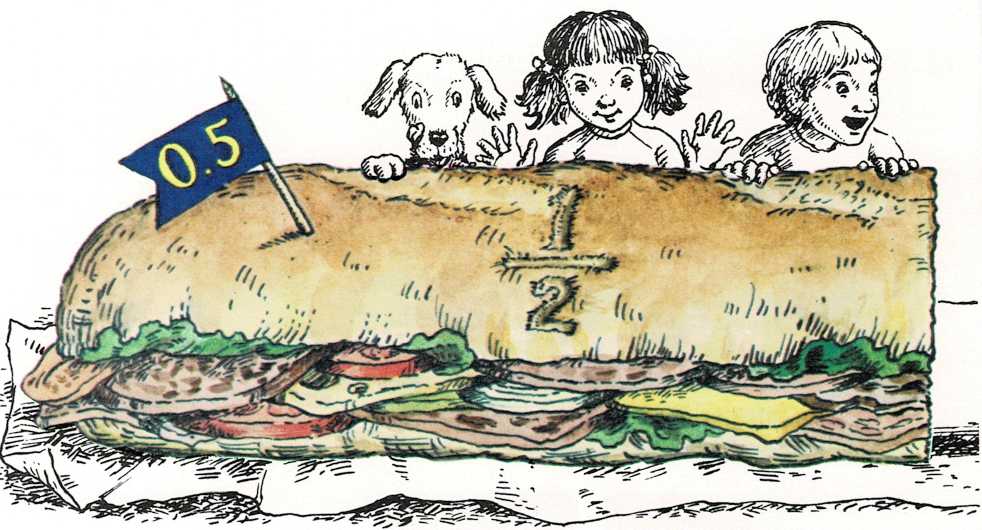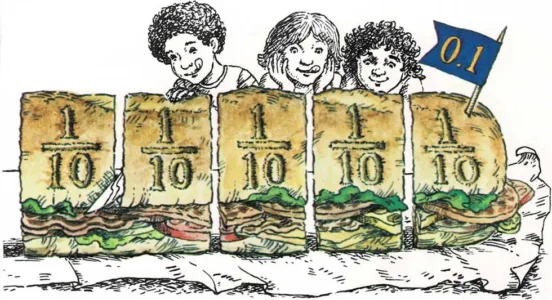
Tenths, hundredths, and dots
When you see the number \| you know that it’s a fraction. It means
one-half of something. But what does 0.5 mean?
The number 0.5 is a fraction, too. And it, too, means one-half!
How is this possible? How can \| and 0.5 both mean the same thing when
they seem so different?
Here’s why. Whenever you see a period (a dot) in front of a numeral,
it means that the number is a fraction. One numeral with a dot in front
of it stands for so many tenths of something. The numeral 0.5 stands
for five-tenths, or
But how can be the same as i? Well, if you cut something into ten
same-size

pieces, each piece will be one-tenth . And if you divide the ten pieces
into two equal piles, or halves, you’ll have five pieces (in each pile.
So, yn or 0.5, is one-half.
Showing fractions with numerals and a dot is called the decimal
[(dehs]{.smallcaps} uh muhl) system. Decimal means “tenths.” The dot
is called a “decimal point.”
Decimals can also be used to show hundredths and thousandths. One
numeral after a decimal point stands for tenths. If there are two
numerals, they stand for hundredths. For example, 0.15 stands for
fifteen-hundredths, or -i/y. If there are three numerals after the
decimal point, they stand for thousandths. For example, 0.500 stands for
Does seem like a mighty big fraction? It’s really nothing more than \|
again! Can you see why?

